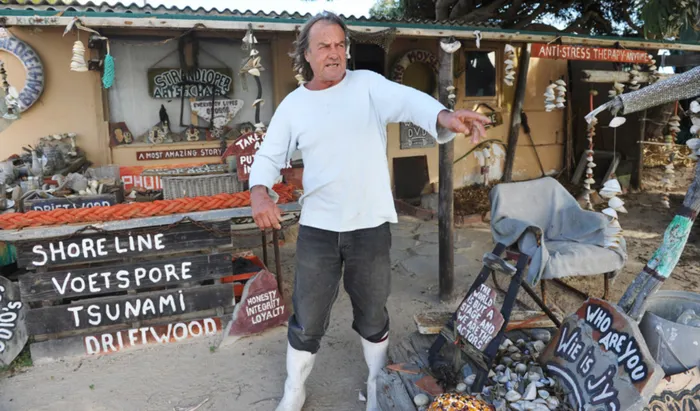Divers who risk their lives for ‘women’s vanity’

Melanie Gosling
THEY are a rare breed, diamond divers, working alone in a high-risk job that sees two of them die on the West Coast every year.
“Mostly falling rocks. The diver excavates underwater, and he works totally alone. Four pulls on the line means he wants to come up, but if he’s under a rock, there’s no way to pull.”
George “One Time” Moyses, 59, drags on his cigarette in the little shack on the beach outside Port Nolloth.
“The sea is a treasure trove, but we get so little time to get it. You need a day with less than one-metre swell and visibility of at least a metre. You depend on the weather, like a fisherman. If I don’t get diamonds, I don’t get money. Winter times the divers are poor. And what you bring up, you give 50 percent to the company.”
Moyses has been a diamond diver for 30 years. It’s a life that’s getting increasingly harder. All the “easy” diamonds have gone, and in the last 15 years, the number of “sea days”, with calm water and good visibility, has dropped drastically, possibly because of climate change. And divers also don’t keep all they take out. Although they take the risks and bear the costs, they have to give up to half of the price of the diamonds to one of four big companies that own all the marine diamond rights: De Beers, Alexcor, Namaquagroen and Transhex.
Moyses, one of about 60 diamond divers on the West Coast, is one of the more colourful. His tiny front yard, cordoned off with old ropes from boats, is a crazy collection of flotsam and jetsam. Some have been transformed into art, like a “great white” carved out of a huge piece of foam. Old buoys, fishing nets and shells strung together dangle from the stoep. Painted signs on driftwood say “Baywatch Diamond Diver”, “Anti-stress therapy anytime”, and on the dustbin, “Bin Laden”.
“Ja, it’s a good place. Belonged to the head of the copper mine at Okiep in the 1920s. They used to travel here by oxwagon. It’s all I need, as long as there’s no tsunami.”
It took him a while to find his niche. Born in Senekal in the Free State, he went to university because it was expected of him, but left because he knew it was not for him. Then came his compulsory army call-up and afterwards he tried the hotel school in Johannesburg.
“I was very into spearfishing and surfing and I spent a lot of time in Natal. Started living a bit of a hermit lifestyle in my Landie. But then it started bugging me, thought I must start settling down, you check, and through a buddy of mine I became a train driver.”
He laughs, pushing back his long grey hair.
“Was very alien to my Moyses family. Their son, a train driver. That was only for low-class whites. Then in the railway hostel I met an ex-Navy diver. He introduced me to the head of the navy diving school.”
Moyses had found his calling. Of the 30 men who started the course, he was one of only eight who finished. He worked in the SA Navy diving school for several years until he heard about divers diving for diamonds. He got a job in Port Nolloth diving on the Lucille Way.
The divers do not carry tanks, but breathe through an “umbilical line” attached to a compressor on the boat. Underwater they look for diamondiferous gravels. A pipe sucks up the gravel, which is collected into 25kg bags. Moyses has an agreement with Alexcor, which sorts his bags for diamonds and gives him half of what the company sells them for.
“My first day, the sea was like a lake. We went down, the guy showed me the nozzle, gave me the thumbs-up and he was off, a line of bubbles. So I started working with the pipe, and the viz was so good and I checked these shiny things coming ching-ching-ching down in the water and I picked them up and I thought: These have got to be diamonds. I had never seen one before. I went to the surface with one in my glove. It turned out to be a 3.5 carat.”
Thirty years ago, anything that looked like gravel carried diamonds. Today divers have to work a lot harder.
“Nothing, not even drugs, comes as close to diamonds in value for the size. All the shady characters around the world fund their activities with black market diamonds. Even the CIA, with Savimbi, brought their experts out and it was straight exchange of armaments for diamonds. And the irony is it’s all about vanity. Every woman must have a diamond when she gets engaged because De Beers has told them diamonds are forever.”
melanie.gosling@inl.co.za